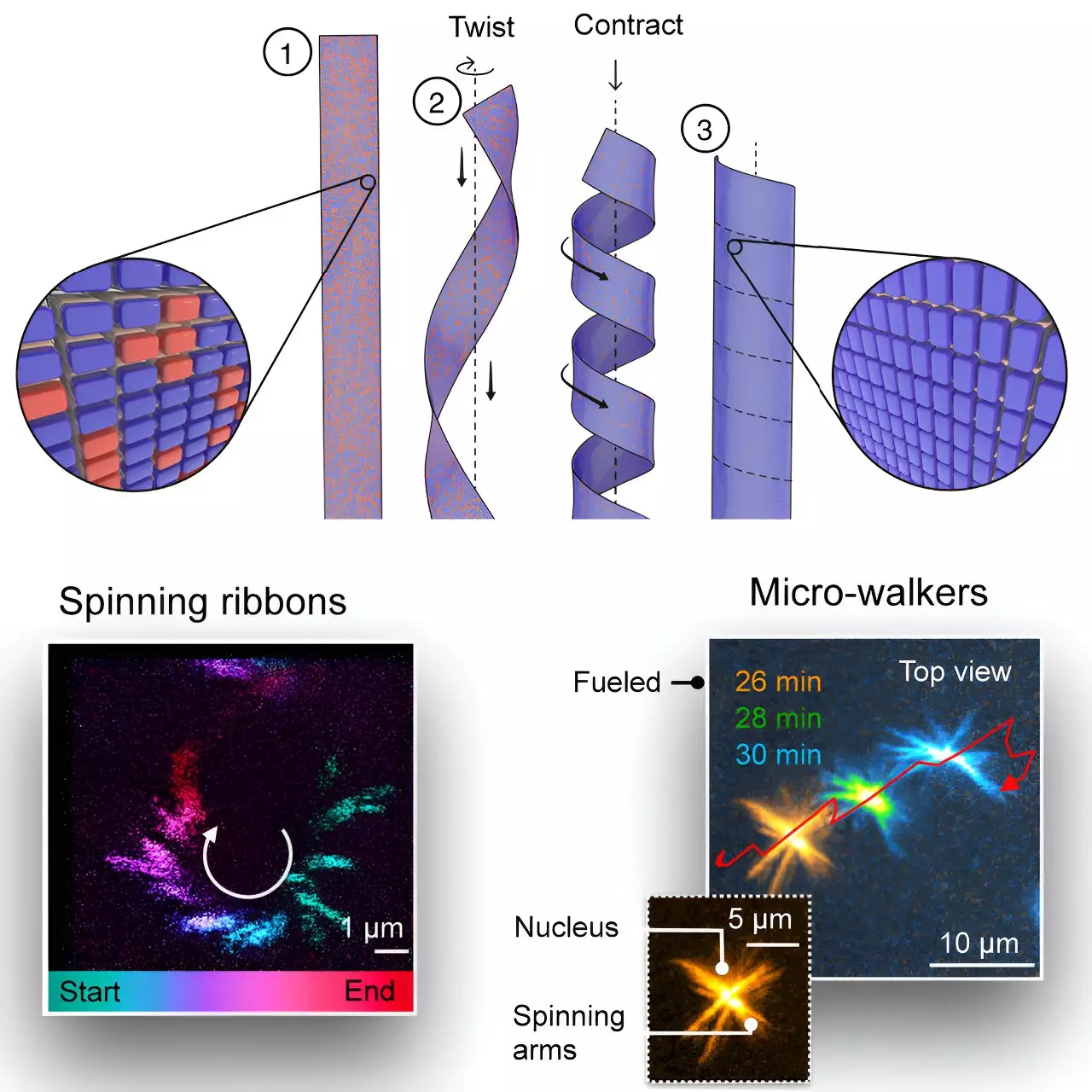At the forefront of nanotechnology, researchers from the Technical University of Munich (TUM) have achieved a significant breakthrough by designing an artificial motor utilizing supramolecular structures. This intricately engineered wind-up motor is not only minuscule but also exhibits remarkable power generation capabilities. Composed of specially formulated peptide ribbons, the motor employs chemical energy to trigger movement, an innovative approach that mimics biological processes previously observed only in the natural world.
Unlike traditional motors that rely on electrical energy, this novel motor operates through a chemical reaction, a feature that underscores its uniqueness. The ribbons, measuring mere micrometers in length and nanometers in width, are designed to align and twist into fin-like shapes upon the introduction of a chemical fuel. The resulting motion allows them to interact with and propel tiny objects, showcasing an unparalleled efficiency at the molecular level. This is an essential step forward since until now, similar systems had only been recorded in biological entities such as archaea, which utilize ATP to power their flagella.
Potential Applications in Medicine
The implications of this research extend far beyond theoretical interest. The prospect of utilizing these peptide ribbons in nanorobots brings about revolutionary possibilities in the medical field. Anticipated applications include targeted drug delivery systems that could navigate the complex network of blood vessels in a human body. Imagine tiny robots equipped with the capability to detect and transport medications directly to tumor cells, minimizing side effects and maximizing treatment efficacy. However, the current fuel used poses a hurdle, as it remains unsuitable for in-vivo applications due to potential toxicity.
An enticing aspect of this research is the ability to manipulate both the speed and direction of the ribbons’ rotation. By adjusting the quantity of chemical fuel administered, researchers can finely tune the performance of these motors. Furthermore, the intrinsic properties of the molecular components allow for deliberate changes in rotational direction, making these motors not just powerful but also highly controllable. This level of precision opens doors to intricate applications where dynamic control is crucial.
Future Directions and Challenges
Despite the remarkable achievements, the journey is far from complete. The challenge of developing a biocompatible fuel remains a primary focus for the researchers, as advancing this technology for practical, therapeutic purposes hinges on overcoming such barriers. Moving forward, collaborations with experts in biocompatibility and drug formulation may enable the creation of more sophisticated micro-walkers capable of operating within the human body safely.
The work done at TUM not only extends our understanding of supramolecular chemistry but also offers a promising glimpse into how artificial molecular motors can transform medical treatments in the future. With an emphasis on precision, adaptability, and potential applications, the findings herald a new era in nanotechnology, paving the way for innovative therapeutic strategies that could revolutionize healthcare as we know it.


Leave a Reply